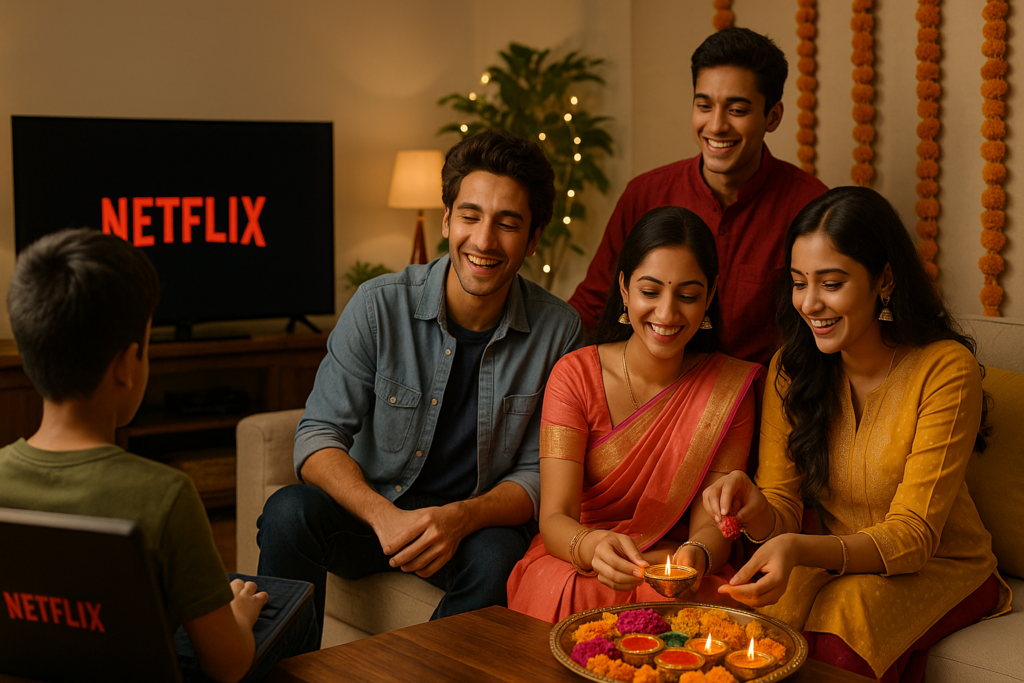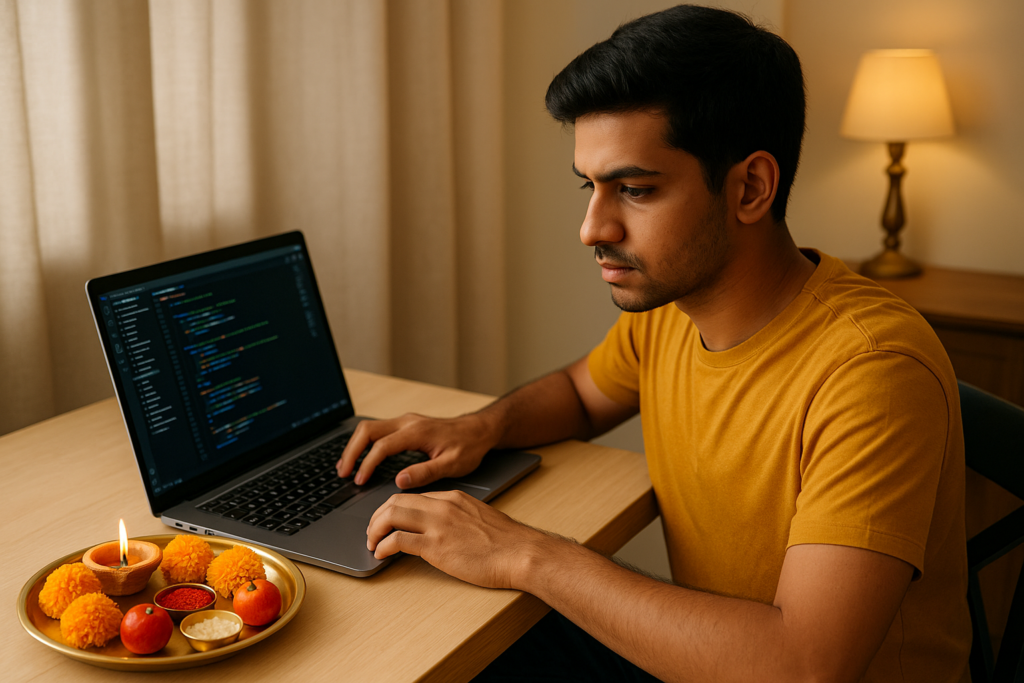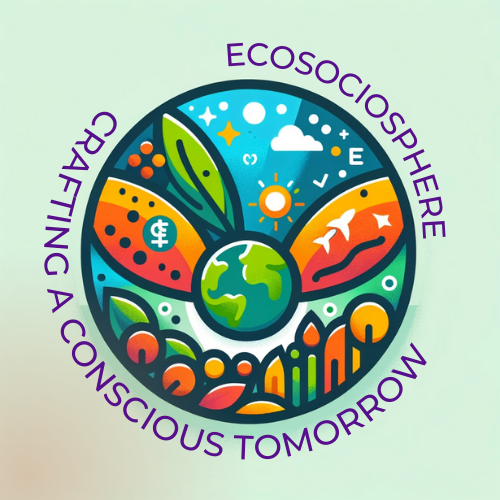Fun fact: Over half of India’s population is under the age of 30, making it one of the youngest countries in the world—but also one caught in one of the oldest cultural identity debates.
If you’re young and Indian today, chances are you’ve been asked why you don’t touch elders’ feet, why you speak better English than Hindi, or why you’d rather text than attend a family function. Welcome to the push and pull of living between two worlds—one rooted in centuries of tradition, and the other racing toward a hyper-connected, global future.
This isn’t just a generational issue. It’s a cultural identity crisis playing out in real time across smartphones, classrooms, weddings, and WhatsApp groups.
Tradition vs. Modernity: The Daily Tug-of-War
The Indian youth of today are digital natives with ancient roots. They’re expected to be obedient yet assertive, spiritual yet rational, modest yet ambitious. It’s not just confusing—it’s exhausting.
Family First… But Not Always
In Indian culture, the family is sacred. Sacrifices are made, dreams are often compromised, and decisions—from careers to marriages—are made collectively. But the modern Indian youth, influenced by Western ideals of individualism, wants agency. They want to choose their partners, pursue non-traditional careers, or move cities without a guilt trip.
The conflict isn’t between respect and rebellion—it’s between autonomy and obligation.
Fashion, Faith, and Filtered Lives
A girl wearing ripped jeans might still light a diya (oil lamp) during Diwali. A guy listening to Drake could also visit a gurdwara on Sunday. Yet, they’re often judged as “too Western” or “not Indian enough.”
Social media platforms like Instagram and Snapchat amplify this divide. On one hand, they allow young Indians to experiment with identity. On the other, they create curated, dual versions of life—one for public approval, one for family approval.
Language as a Battleground
“Speak in Hindi at home!” is a phrase most middle-class urban kids have heard growing up. But English, often seen as a key to upward mobility, dominates schools, media, and job interviews.
As a result, many urban youths can express emotions better in English than in their mother tongue—creating distance not just from language, but from cultural intimacy.

Careers: Doctor-Engineer Default vs. Passion Economy
Traditional career paths—engineering, medicine, banking—are still considered the “safe” choices. But today’s youth dream of becoming content creators, sustainability consultants, YouTubers, or stand-up comedians.
Startups like Unacademy (an Indian edtech platform) and YourStory (a media company covering startup culture) have helped normalise unconventional careers, but for many Indian families, passion is still seen as a hobby, not a profession.
When Culture Becomes a Cage
Sometimes, cultural expectations morph into emotional traps.
A 24-year-old in Delhi might be open about their sexuality with friends but remain closeted at home. A 19-year-old in Chennai might want to study music abroad, but is steered into engineering. These are not just stories—they’re silent struggles millions endure.
In conservative households, mental health issues are often dismissed as “overthinking” or “weakness,” further complicating the youth’s ability to express their truth.
The Rise of “Cultural Code-Switching”
Code-switching isn’t just about language anymore—it’s cultural. Indian youth are masters of context-switching:
- Wearing traditional wear at a cousin’s wedding, then slipping into streetwear for a cafe meetup.
- Touching feet at home, but fist-bumping friends outside.
- Performing aarti (ritual worship) in the morning, raving to techno beats at night.
This duality isn’t hypocrisy—it’s adaptability.
But here’s the question: at what cost?
Are they blending identities or constantly betraying parts of themselves to fit in?
Stories From the Middle
The Dancer From Jaipur
Reema, a 22-year-old Kathak dancer, teaches on YouTube while training under a classical guru. She’s faced criticism from both sides—traditionalists who say she’s “cheapening” the art by putting it online, and online viewers who don’t understand the cultural depth of the form.
She isn’t choosing one world over the other—she’s carving a third path.
The Coder Who Prays
Aditya, a Bengaluru-based app developer, works with global clients but still begins each coding session with a Sanskrit shloka (verse). He doesn’t see a contradiction—he sees continuity.

What the Youth Are Asking For
Contrary to popular belief, the Indian youth aren’t rejecting tradition—they’re negotiating with it. They don’t want to be “Western clones,” nor do they want to be shackled by outdated customs. What they seek is:
- Freedom of expression without shame
- Family acceptance without conditions
- Career exploration without guilt
- Cultural pride without rigidity
The Way Forward: Embracing a Hybrid Identity
India has always been a land of contradictions. We worship gods and use smartphones in temples. We chant in Sanskrit and stream K-dramas on Netflix. The youth aren’t abandoning their roots—they’re weaving them into new, evolving tapestries.
To truly support them, society must:
- Listen More, Lecture Less – Conversations, not commands.
- Accept Change as Cultural Evolution – Not dilution.
- Redefine Respect – It’s not about obedience; it’s about empathy.
- Normalise Emotional Openness – Without labels like “weak” or “disrespectful.”
Conclusion: Between Two Worlds Lies a New One
Indian youth today are not lost—they’re evolving. Yes, they’re caught between two worlds, but they’re also building a bridge between them. One tweet, one outfit, one decision at a time.
Maybe we shouldn’t ask them to “choose a side.” Maybe we should start recognizing that being Indian today is no longer about fitting into one mold—it’s about molding your own identity with love, conflict, and creativity.
Author’s Note
As someone who has often felt too Western for my grandparents and too Indian for my global peers, I know this cultural tug-of-war is real. But it’s also what makes us complex, rich, and beautiful in between. I hope this piece encourages more empathy for the next generation navigating this ever-shifting identity.
G.C., Ecosociosphere contributor.
References and Further Reading
- India’s Youth: Demographic Dividends and Cultural Dilemmas – ORF
- Youth in India: Cultural Transition and Identity – EPW




